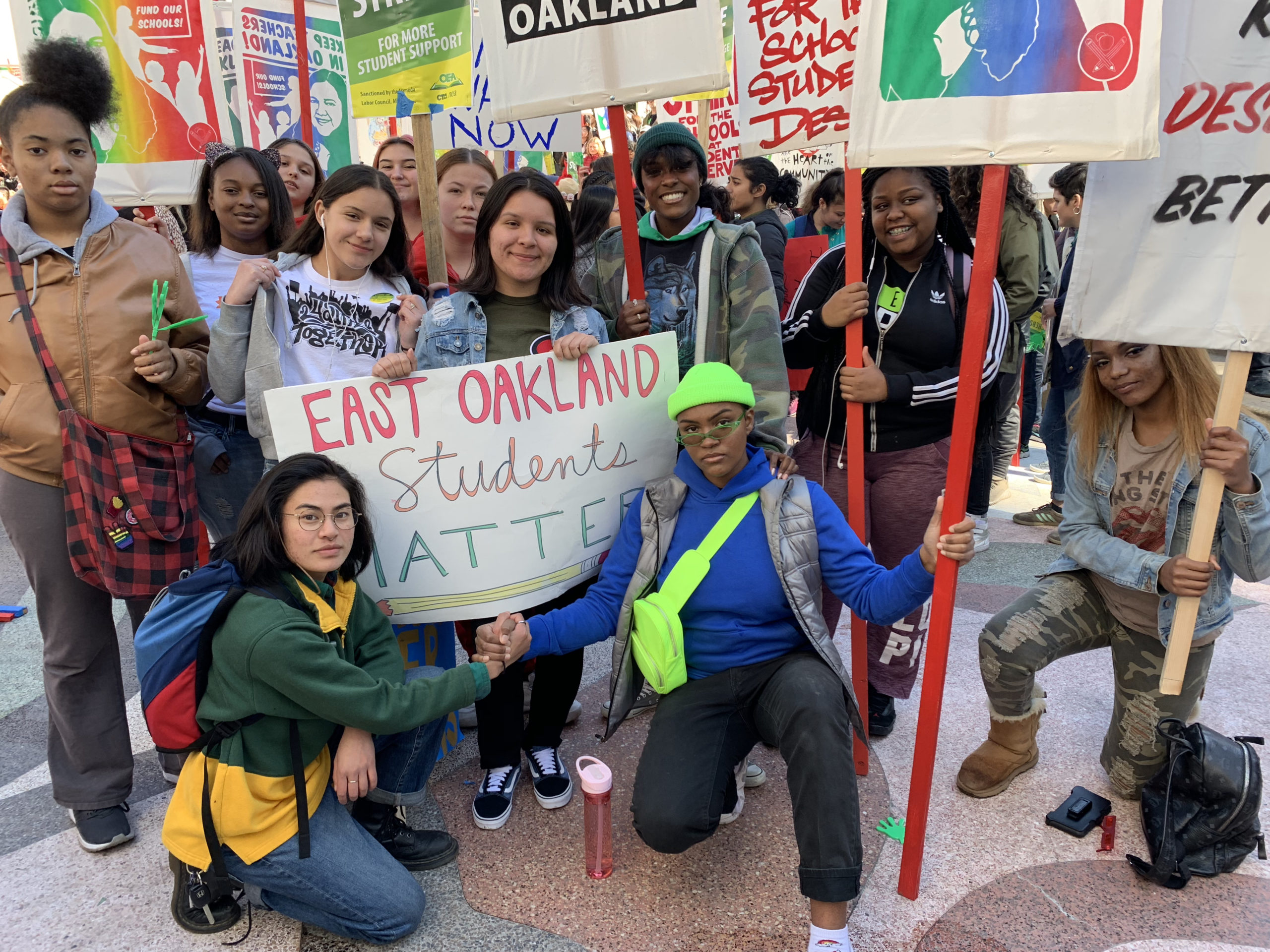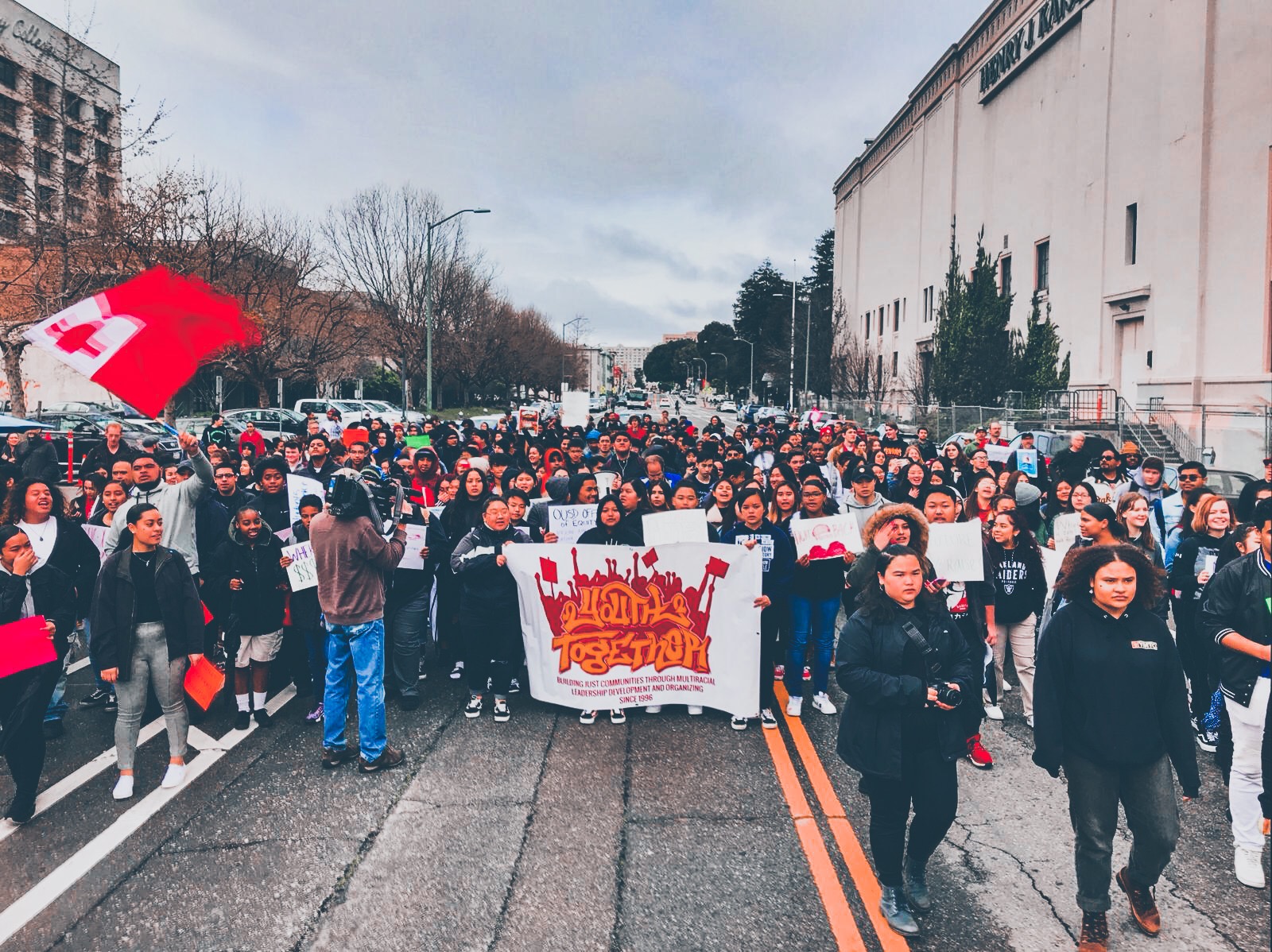For several weeks leading up to and during the Oakland teachers strike in February 2019, the eight staff members of Youth Together put in 12-hour work days to make sure that families in Oakland wouldn’t go hungry. Their days started in the early morning. Along with parent volunteers and a few students, they divvied up bags of groceries, loaded them into their cars, then delivered them by 8 a.m. to six sites in East Oakland, including a public library and the offices of various nonprofits.
The Oakland teachers strike was taking place — part of a wave of teachers strikes across the country that had occured in the past year. As 3,000 educators picketed outside their schools — demanding higher pay, smaller class sizes, and more school counselors and nurses — many parents and students declined to cross the picket line in a show of support.
But if students weren’t attending school, would they have enough to eat? Of the 37,000 students in Oakland Unified School District, nearly 75 percent receive free or reduced-price lunch. Many depend on school for their meals. So, Youth Together partnered with the Alameda County Food Bank to ensure that students and their families wouldn’t go a day without eating.
“We wanted to respect the strike. But we also wanted to respect parents who were taking time off to keep their kids at home,” says Tony Douangviseth, the executive director of Youth Together, a nonprofit that addresses educational inequities through youth leadership development. “Economically, [the strike] had an impact not only on teachers, but also on the well-being of families and parents in these areas.”
Giving away groceries was just one part of a coordinated effort by a coalition of Bay Area community organizations to care for families during the strike. A week before the strike began, the executive directors of three organizations that serve East Oakland — Bay Area PLAN (Parent Leadership Action Network), Youth Together, and Bay Rising — met for four and a half hours on a Saturday in the offices of Bay Area PLAN to discuss what unintended impacts the strike might have on families.
“We took it amongst ourselves to protect our community, to brace for impact,” says Douangviseth.
The coalition, which was led by Bay Area PLAN and soon grew to include other groups, devised a plan and delegated tasks. They would set up “solidarity schools,” an approach used in the 1996 Oakland teachers strike, which helped raise wages and reduce class sizes. Parents and guardians not wanting to cross the picket line could drop off their kids at locations where free childcare, educational activities, and meals would be provided. The group contacted recreation centers, churches, and other spaces to house 11 makeshift schools in East Oakland. Bay Area PLAN took on the responsibility of liability insurance for each site and coordinated with strike captains at public schools to get the word out about the solidarity schools to parents.
On February 14, just a week before the strike began, the San Francisco Foundation awarded three organizations — Youth Together, Bay Rising and AYPAL: Building Asian Pacific Islander Community Power — with Rapid Response Fund grants to quickly set up infrastructure and plan logistics for solidarity schools during the Oakland teachers strike. The funds helped pay for hot meals and snacks at solidarity schools, supplies, stipends for educators staffing the schools, and overtime hours put in by the staff of the organizations during the strike. During the strike, 860 children attended the 11 East Oakland solidarity schools.
It was all-hands-on-deck for the coalition during the week-long strike. After completing the daily groceries deliveries, Youth Together staff joined high school students and educators on the picket line and accompanied students as they organized their own protests, including a march by hundreds of high school students.
Then, in the evenings, working until 7 or 8 p.m., they assembled grocery bags for the next morning’s deliveries, filling them with bread, cereal, fruit, and other goods provided by the food bank. Each bag contained three days’ worth of groceries. By the end of the seven-day strike, they had given away 400 bags. The solidarity schools also served 1,524 hot meals and 4,000 snacks.
Teachers returned to the classroom on March 4. Though they didn’t get everything they asked for, they did get 11 percent pay raise over four years and the school district agreed to hire more school counselors, psychologists, and special education teachers.
Erika Garner, a parent, dropped off her two daughters, then in kindergarten and second grade, daily at the solidarity school site at Lion Creek Crossing, an affordable housing site where the family lives. Using the solidarity school was both the best option for her daughters’ education and a way for her to support the strike.
“They have a relationship with their teachers,” Garner says, noting that her children’s regular teachers at Futures Elementary School taught at the solidarity school. “It was a way to support the staff and teachers on their goal to get more pay and to make my children more comfortable. “As a parent, I feel like [the strike] was important.”
By Melissa Hung, foundation consultant



